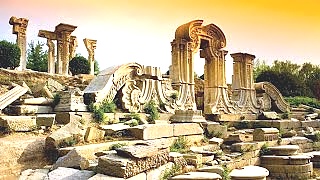The Taiwanese superstar diva Chyi Yu sings Olive Tree and C'est La Vie ...
[640],shadow=true,start=42,stop=
Don't ask from where I have come
My home is far, far away;
Why do you wander so far
Wander so far, wander so far ...
For the little bird flying in the sky,
For the blue brook running in the mountain,
For the broad meadow green and wide,
I wander, wander so far ...
Then, is there more ?
Yes,
For the Olive tree of my dream ...
 Song : The Tree of Life (Olive Tree)
Song : The Tree of Life (Olive Tree)


















